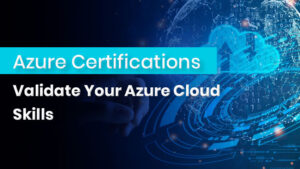
How to Harden Your Infrastructure Using CIS Benchmarks
How to Harden Your Infrastructure Using CIS Benchmarks Introduction As more organizations go faster with their digital transformation, the security and resilience of IT infrastructure
Limited-Time Offer! Get an exclusive 40% OFF on IPSpecialist Premium Monthly & Annual Plans. Use Promo Code: UPSKILLNOW at checkout.

How to Harden Your Infrastructure Using CIS Benchmarks Introduction As more organizations go faster with their digital transformation, the security and resilience of IT infrastructure

Azure Certifications – Validate Your Azure Cloud Skills Introduction Cloud computing has transformed the business landscape, providing scalability, flexibility, and affordability in a way

Top Cyber Security Trends: What Every Organization Must Know Introduction In an era marked by digital transformation, remote workforces, and rapidly evolving threat landscapes,
Table of Contents

The managed SQL database service known as Amazon Relational Database Service (RDS) is offered by Amazon Web Services (AWS). For storing and structuring data, Amazon RDS offers several database engines. Additionally, it supports activities related to relational database maintenance, including data migration, backup, recovery, and patching.
Amazon RDS makes the setup and upkeep of relational databases in the cloud easier. A cloud administrator uses Amazon RDS to set up, run, manage, and scale a relational instance of a cloud database. Although it is not a database in and of itself, Amazon RDS is a service used to manage relational databases. This article covers Amazon RDS’s capabilities, functionality, advantages, and use cases.
If you are interested in beginning your career in AWS, especially in Amazon RDS, IPSpecialist is considered the best place to start your journey. Check out our AWS Courses now!
You must access your cloud-hosted data wherever and wherever you need it. The Multi-AZ service-level agreement promises a database uptime of at least 99.95% per month. Synchronous replication to a backup database enables failovers to be handled with the least amount of lag possible.
An on-premises self-hosted database can be complicated to scale, but Amazon RDS makes it much more manageable. The two types of automatic scaling that Amazon RDS provides are horizontal (adding new computers) and vertical (adding more resources). When the database is under more demand, the service has a load balancer that can distribute requests properly.
Given that the CPU and storage can scale independently of one another in a specific database instance, Amazon RDS stands apart from many other services of a similar nature. They are very simple to scale back down, and you will need to be able to scale back down if, for instance, a significant sale or event in your company only lasts a month. To scale several RDS instances simultaneously, users can also add them to an instance class.
Users may easily examine and troubleshoot the performance of their relational databases with Amazon RDS due to the Performance Insights dashboard. Users of Amazon CloudWatch may effectively track performance and form metrics to gain a deeper picture of their businesses.
For every GB of allocated storage, General Purpose Storage offers 3 IOPS as a minimum. Additionally, it can burst up to 3,000 more IOPS.
More incredible speed is provided via provisioned IOPS storage. For each RDS instance, users can select an IOPS rate of up to 40,000 IOPS.
The pricing structure for Amazon RDS is relatively simple. Users do not have to worry about upfront expenditures because they can pay for what they need each month, and there is no set minimum cost.
Only instances that are currently active require full payment. A discount is available when you reserve instances for lengthy periods. Furthermore, you can halt database instances for an entire week if necessary.
AWS’s services include numerous security safeguards, including IAM (Identity and Access Management). Additionally, you can isolate a specific database instance and connect to infrastructure using an encrypted VPN due to Amazon VPC (Virtual Private Cloud).
Although different variants of the RDS engine may offer slightly varying levels or types of security, automated patching and security monitoring are two things you can generally rely on.
A database engine powers each instance of the database. Relational databases such as MySQL, PostgreSQL, MariaDB, Oracle, Microsoft SQL Server, and Amazon Aurora are supported by Amazon Relational Database Service (RDS). While Oracle Database and Microsoft SQL Server are owned and developed by Oracle and Microsoft, MySQL, PostgreSQL, and MariaDB are Open-Source Database technologies.
The open-source database engines are the least expensive of the various solutions. Oracle and Microsoft SQL Server engines are the most expensive because their Amazon RDS services include their database licenses.
An Amazon RDS instance and the resources it requires can be created, configured, managed, and deleted by a database administrator. An environment for cloud databases is an Amazon RDS instance.
Although there are other options than Amazon RDS, it might be a solid option for consumers looking for a managed relational database in the cloud.
In addition to Amazon RDS, highly popular options for businesses to store and manage their enterprise data include MySQL, PostgreSQL, and MariaDB. The solutions do not always provide a built-in method to combine data from many sources, which is necessary to acquire more profound insights into your company’s needs. This is because there are many possibilities for establishing a relational database.
Users can use MySQL, another managed database service, to implement cloud-native apps. It was created by Oracle and is open-source, and MySQL is one of the most popular products on the market. Despite not offering the same level of usability as Amazon RDS, the program is frequently relatively quick and a reliable solution. It is incredibly scalable and compatible with a wide range of operating systems.
It is an ACID (Atomicity, Consistency, Isolation, and Durability) compliant object-relational database system. PostgreSQL provides numerous disaster recovery options and is compatible with many data types and formats. Synchronous, asynchronous, and logical replication are all supported by the system. The key advantages of PostgreSQL are its open-source nature, risk tolerance, and low maintenance requirements. But compared to MySQL, it is slower and has a lot more complex functionality.
After Oracle acquired MySQL, its developers forked their original project to create MariaDB as a replacement. Replication happens quicker. Although the MariaDB Foundation takes the lead on system development and documentation, MariaDB is a community-developed and maintained database. The goal is to make the development process as open and transparent as feasible.
The AWS administration dashboard and toolkit that come with it are the main factors that influence why many firms opt for Amazon RDS over these other alternatives. Additional factors include the system’s improved availability, good durability, simple scalability, pricing structure, and simplicity of managing separate database setups.
The use of Amazon RDS has several benefits and drawbacks.
The critical advantage of Amazon RDS is that it aids businesses in controlling the difficulty of handling sizable relational databases. Additional advantages include the following:
Database administrators don’t need to become experts in any particular tools. Additionally, they can use the management console to manage numerous database instances. RDS is compatible with database engines like MySQL and Oracle that consumers may already be accustomed to. The manual backup and recovery methods are also automated.
Using Amazon RDS has some drawbacks, including the following:
Users do not have access to the server that runs RDS since it is a managed service that only gives high-privileged users access to particular services.
For various patching and scaling procedures, systems must be taken offline. These processes have varying times and compute resources require a brief downtime when scaling.

High throughput, scalability, and availability are required to support expanding apps. Utilize variable pay-per-use pricing to accommodate different application consumption patterns.
Instead of worrying about self-managing your databases, which can be time-consuming, complicated, and expensive, use Amazon RDS to innovate and create new apps.
Switch to Amazon Aurora to get rid of pricey, restrictive commercial databases. By switching to Aurora, you can receive commercial databases’ scalability, performance, and availability at a tenth of the price.
With high availability, security, and database compatibility, Amazon RDS manages primary database administrative operations and offers affordable, resizable capacity in a standard relational database. The excellent capabilities of Amazon Relational Database Service (RDS) could help you with various problems. This is one of your finest solutions if you desire to host your application and database separately.
© 2025 All rights reserved | Privacy Policy | Terms and Conditions | Sitemap | Cookie Policy




